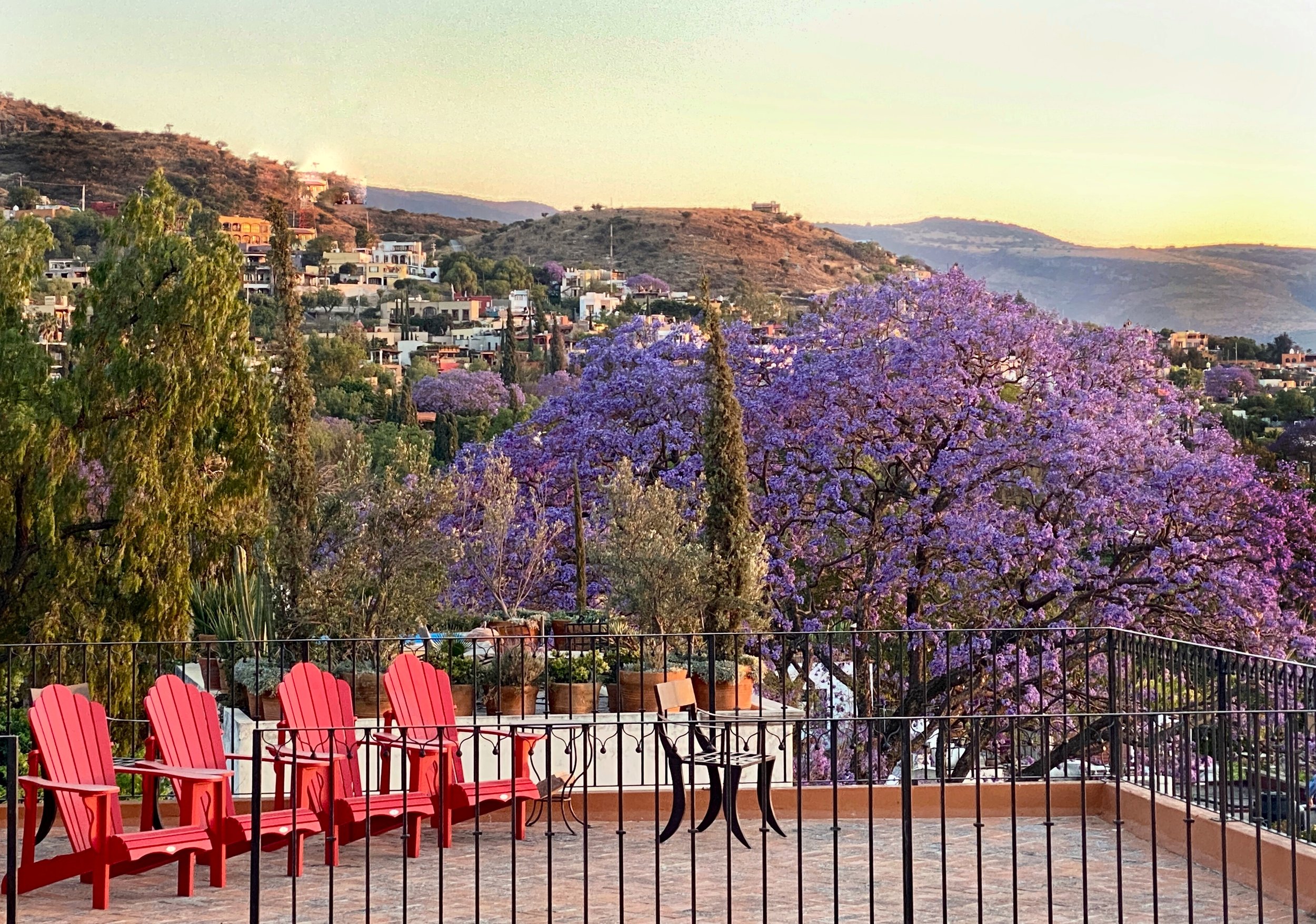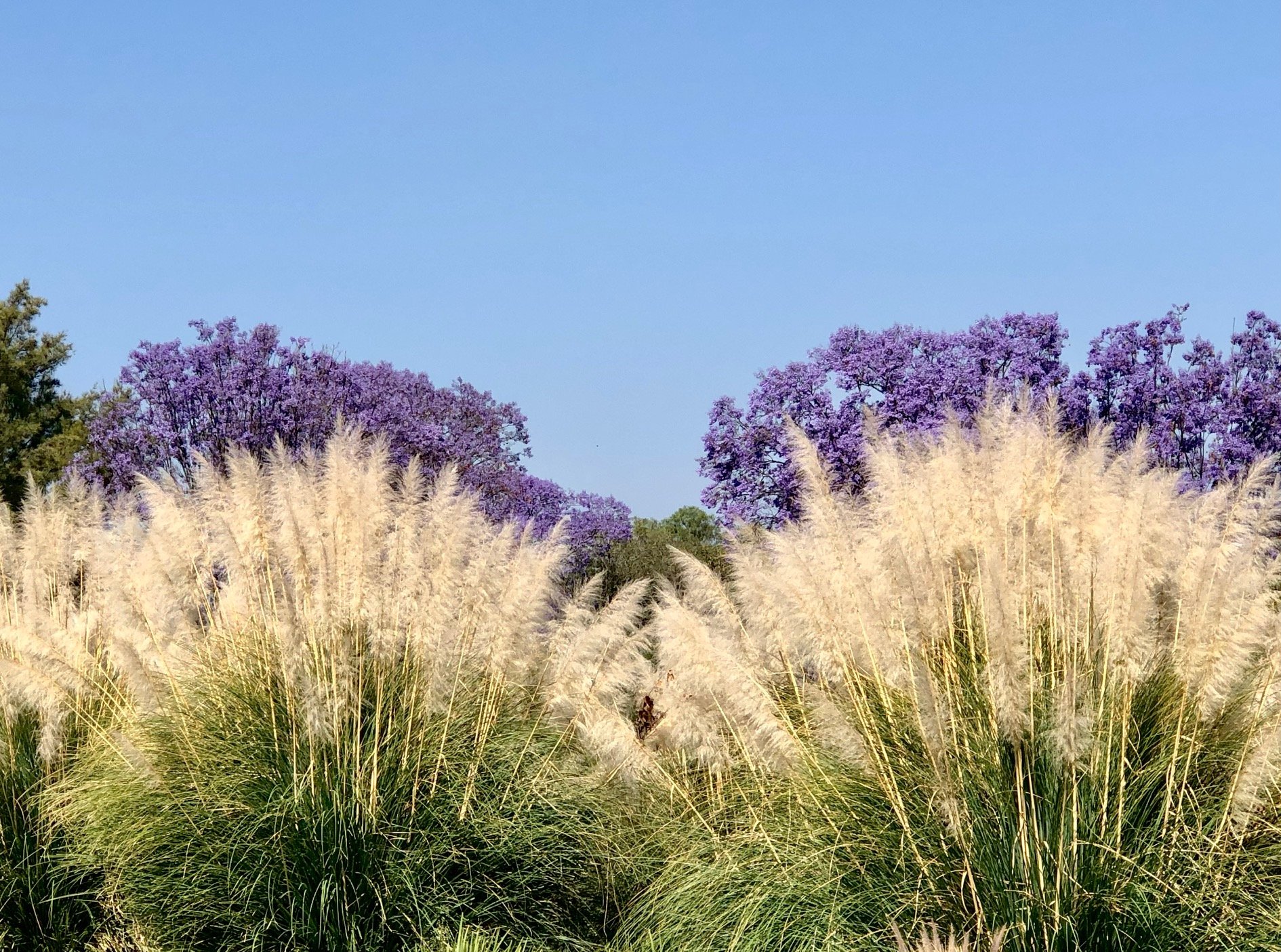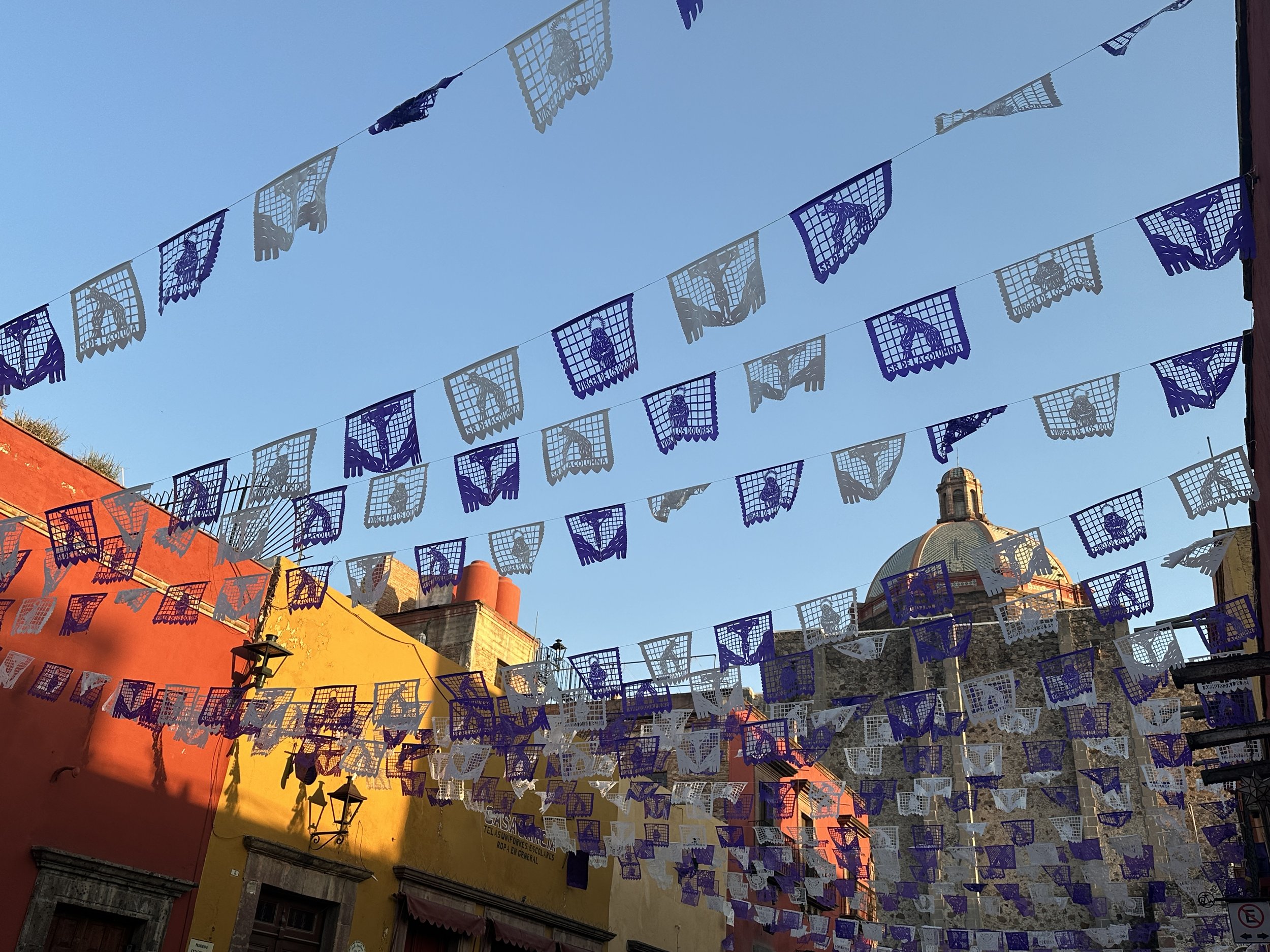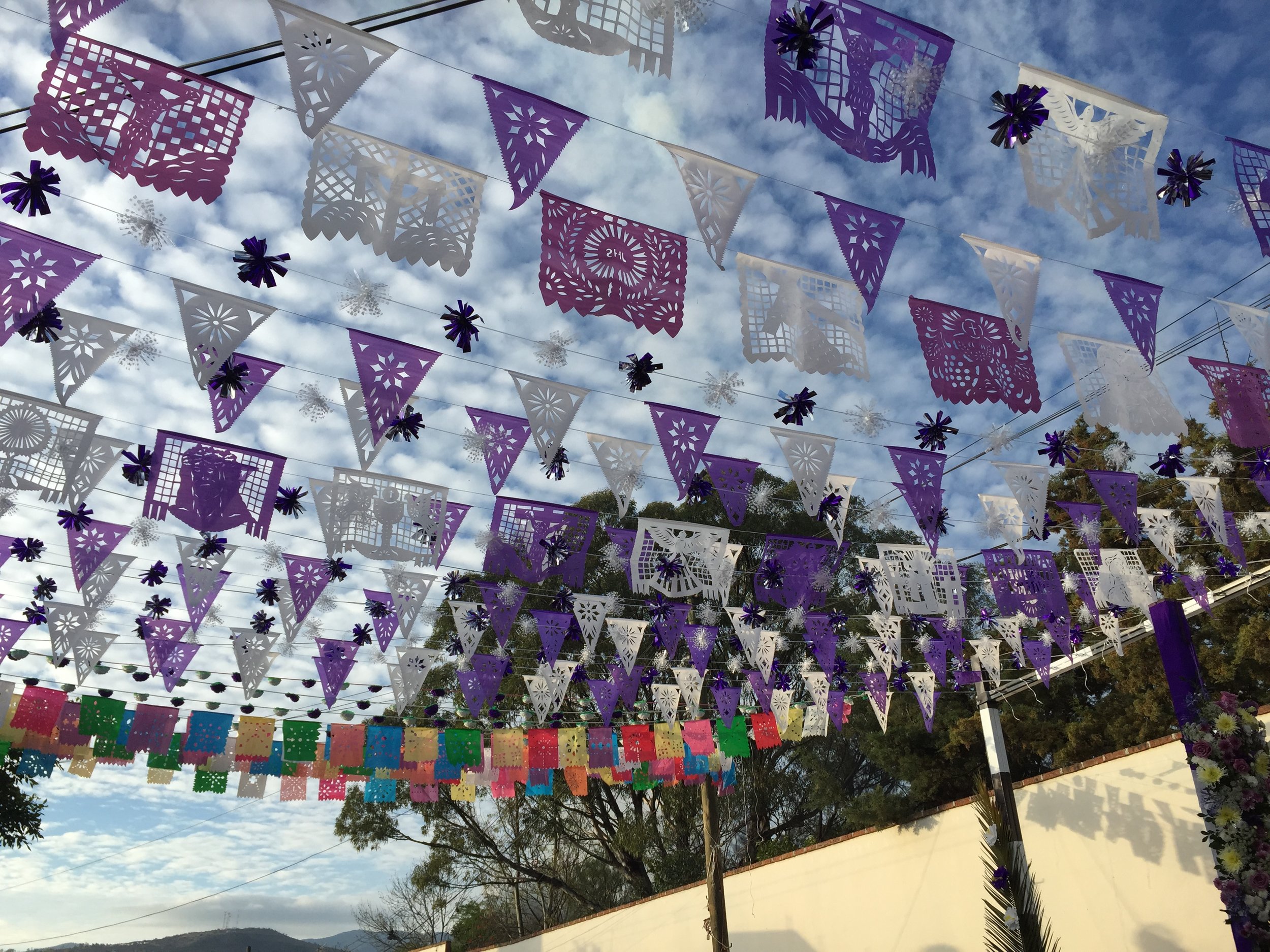A Synchronicity of Color
One of many jacarandas in the historic centro of san miguel
As we greet April, we can still revel in the mauve-colored jacaranda trees in full bloom. Like cherry blossom trees in Washington, DC, they grace the streets of San Miguel de Allende, Mexico. They also offer even more pizazz to a town already accentuated by year-around blooming dark pink and magenta bougainvilleas. And their timing is almost uncanny: jacarandas’ extravagant displays coincide with Semana Santa aka Easter. Synchronicity?
Like the forty days of Lent preceding Easter, anticipation is part of the pleasure for appreciating the deciduous Jacaranda mimosifolia trees which look bare since the flowers appear first. Witnessing their blossoms seemingly overnight, pop up all about this UNESCO World Heritage Site, announces spring, almost exactly on the day of the Equinox. Sadly though, unlike tough and persistent bougainvilleas, their violet petals will soon be succumbing to the wind and strewn about sidewalks, streets, car windshields, one’s hair, you name it. More romantically stated, the author, Alberto Ruy Sanchez, once wrote: when the jacaranda flowers fall, “the sky blooms on the ground.”
Credit: David Lippman
While their ephemeral nature might be viewed as a quality, I appreciate their synchronicity with a cultural calendar: Semana Santa. Easter is one of the holiest times in this Catholic country, in particular in the state of Guanajuato. Now is when the color purple, associated with royalty and laden with symbolism, is revered, almost worshipped. Below, is a street carpeted with tiny shreds of dyed sawdust, yellow chamomile flowers, candles and oranges. Cloaked in a deep purple velvet robe is the bereft Virgin Mary.
Not simply in churches or home altars, but also along streets adorned with paper flags, does the color purple prevail. It echoes the jacarandas while the church bells ring. Jacarandas need not be “adorning” churches or fancy neighborhoods either. Contrasting with shacks or a car repair garage are some of the most impressive ones in town. After all, the distinctive chiming of church bells knows no boundaries. And, during Semana Santa, every day marks an event dating back centuries. For example, chamomile flowers were used in pagan rituals to enhance positive energy, joy and calmness. Like the bright orange, strongly scented marigolds during the Dia de los Muertos, they are abundantly displayed while exuding a lovely, subtle scent.
Just like Christianity introduced to the New World from Europe, jacarandas were also “imported”. However, their journey from tropical South America, in particular, Brazil, was much later. Even more fascinating is the route they took when Tatsugoro Matsumoto, a Japanese imperial landscape designer incorporated jacarandas in his designs in Peru. He was then invited by president, Porfirio Diaz in the early 20th century to embellish Chapultepec and the Roma district. A later president then sought to make Mexico City resemble Washington, DC with allées of cherry trees, a former gift from Japan to DC in 1912. Matsumoto, an experienced horticulturist said: “no way”. A climate zone could not be altered political decree…



Much symbolism resides in the color purple for both European royalty and Christianity. For Judaism as well, this combination of the two primary colors: red and blue, with red symbolizing sin and blue, purity, brings a transformation: redemption. For Catholics during Lent, purple is associated with penance, prayer and personal sacrifice. And while purple may signify pain and mourning, it is ultimately associated with the celebration of Christ’s resurrection and sovereignty. Particularly in Mexico, where the Virgin Guadelupe is highly revered, royal blue and amethyst purple dominate long with white Easter lilies.
Below: purple and white paper lace-like flags above cobblestoned streets.


Jacaranda petals atop an automobile window and windshield wipers
A Japanese young woman enjoying a view of jacarandas
To read about Jacarandas in Mexico, City: https://www.nytimes.com/2023/03/25/world/americas/mexico-city-jacarandas.html?smid=nytcore-ios-share&referringSource=articleShare
To read more about the symbolism of red and blue:: https://www.honeysharp.com/journal/2018/12/9/red https://www.honeysharp.com/journal/2019/1/5/casa-azul-a-story-about-blue









